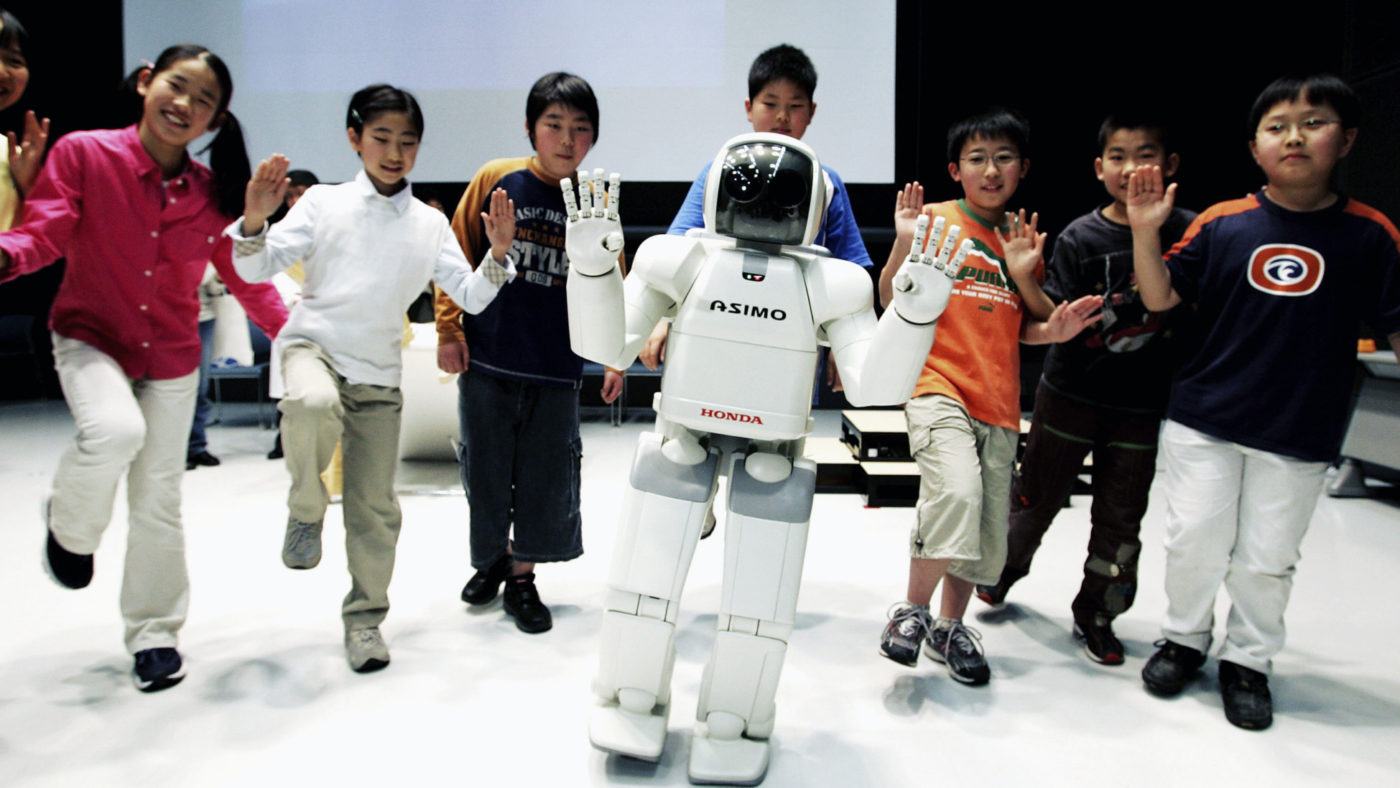In almost every sector of society, technology has delivered revolutionary improvements in efficiency over our lifetimes – even just over the past decade.
Yet there is one glaring technophobic outlier. Education. For all the hype around online courses, or computers in the classrooms, the basic model is the same as it ever was: children sit in a classroom, listen to a teacher, go off and do their homework, then repeat the cycle.
It’s been obvious for quite a while, however, that this isn’t really working. According to the OECD’s PISA reports, many Western countries – including the USA, UK, France and Australia – are experiencing a long-term fall in test scores, even as the rest of the world gains access to better education. Over the past decade, these children have become less competitive relative to older graduates and, more alarmingly, to their international peers.
At the same time, the job market is changing – becoming permeated by technology. Artificial intelligence is estimated to automate 47 per cent of all jobs by 2034. And we seem to be doing what amounts to nothing in the way of preparing for this.
Even if you argue, as Tim Worstall recently did on CapX, that we will be able to cope with the churn in the labour market, this will depend on our producing a far more skilled workforce. Yet signs that this is happening are scarce.
Consider the use of technology in education – so-called “EdTech”. This is capable of producing extraordinary results, yet we have made only minor tweaks to the traditional timetable. While a token class in coding or Photoshop is no doubt valuable, it’s hardly helping our children to achieve their full potential.
One of the most promising displays of how far EdTech can take us is the concept of personalised learning. This is a monumental disruption to the broad-strokes approach taken by most schools currently.
We have known the benefits of systems that skew towards individual attention for a long time (smaller classrooms, private tutors, etc.) but they have traditionally been priced out of reach to the majority.
Yet by collecting information and using machine learning, computers can now develop a comprehensive understanding of each student before feeding the information back to the teacher.
It is still the responsibility of the teacher to implement their lesson plan. But now they can do so with a real understanding, not just of the class as an entity, but of every individual under their guidance.
On top of this, there are companies who have created personalised learning systems which track students’ progress, alerting teachers when they fall behind. The immediate results are promising – but limited in their scope, due to the system being implemented only in a select number of schools.
Hand-in-hand with personalised learning tech comes the concept of the flipped classroom. As the name suggests, the basic idea is that homework and class time are flipped. Students watch learning material online at home in the form of PowerPoint presentations or YouTube videos and then spend their class time working on problems and discussing concepts with their peers. In this scenario, a teacher does not act as a lecturer but a guide.
Experimenting with flipped classrooms has been going on for seven years, with consistently promising results. Studies show almost exclusively positive test scores and generally positive reactions from students.
The better exam scores will foster a generation of students better able to compete in the global marketplace – but this is not the only ambition of personalised learning. One of its central ideas is that by the time a teenager is ready to hone in on the direction they want their life to take, they will have the information to back them up.
Instead of an apathetic careers advisor pushing them towards the factory floor or stockroom, they will be able to make data-backed decisions based on an encyclopaedic knowledge of how they learn and what fields they enjoy.
The good news is that there are countless private enterprises pouring millions into new techniques and technologies for learning: Massive Open Online Courses, programming boot camps in Africa, educational gaming.
Yet implementation of EdTech has been so overly cautious that many firms have decided to take matters into their own hands. Whether it be in the form of enormous donations to New Jersey’s education system from Mark Zuckerberg, or Google getting involved in the school curriculum, companies have a rational interest in picking from the most intelligent graduate pool – and are disillusioned with the West’s unimaginative system and slipping scores.
But what those opposed to changes in education refuse to recognise is that it has already happened. Classes are larger, the job market is different, and kids who would have dropped out of secondary schools are deciding to remain. An education method fit for schools 100 years ago is trying to pass itself off in a completely different environment.
Worst of all, reformers are no longer focusing on the bonuses that innovation will bring – they are speaking of offsetting an impending crisis. As Professor Rose Luckin, an AI expert at the University College of London said last year, “I have a horrible feeling that it’s all going to suddenly become apparent that we should have been doing things differently.”


